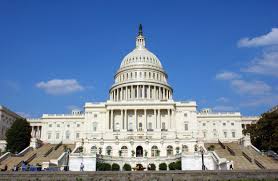What state pays respiratory therapists the most? California boasts the highest average salary for respiratory therapists, but other states can boast some top marks too. For example, wages in New York have grown substantially over the last five years. The average respiratory therapist salary rose by 14.3%, from $65,520 in 2013 to $74,890 in 2018.
How do I become a respiratory therapist in DC?
How to Become a Respiratory Therapist in the District of Columbia
- Complete an Approved Program in Respiratory Therapy.
- Apply for a License as a Respiratory Therapist.
- Pass the National Board for Respiratory Care Examination.
- Maintain your Respiratory Care Practitioner License.
Is respiratory therapist a job in demand? Employment of respiratory therapists is projected to grow 23 percent from 2020 to 2030, much faster than the average for all occupations. About 10,100 openings for respiratory therapists are projected each year, on average, over the decade.
Is respiratory therapist a good career choice? According to the U.S. News & World Report, respiratory therapy is ranked as the 21st best job in the United States, which is based on factors such as median salary, future job prospects and more. Respiratory therapy is also ranked as the 16th best healthcare job in the United States by U.S. News & World Report.
What state pays respiratory therapists the most? – Additional Questions
Who makes more money RN or RT?
Registered nurses enjoy a higher average pay than respiratory therapists. The breakdown of average annual salary is as follows: Registered Nurses – $68,450. Respiratory Therapists – $58,670.
Is respiratory therapy harder than nursing?
From speaking with medical professionals who have gone through both programs, most claim that nursing school was more challenging (for them) than the respiratory therapy program.
What are the cons of being a respiratory therapist?
TOP CONS OF BEING A RESPIRATORY THERAPIST
- You will need to earn a degree.
- If you want to climb in your career, you will need to advance your degree.
- You will need to obtain a license.
- You will also need to obtain certification.
- You may find yourself working long hours.
- You will be on your feet all day.
What is the future of respiratory therapy?
The number of RT jobs is projected to grow by 31,100 positions through 2030, and an estimated 10,100 openings for RTs will be available each year through 2030. According to the Commission on Accreditation for Respiratory Care (CoARC), 415 of the 443 CoARC accredited programs are listed as entry into the profession.
Is studying respiratory therapy hard?
Respiratory therapy school is hard. The schedule is tight. The material is demanding. The skills lab makes you want to vomit…and if that isn’t enough, you also have to survive clinical rotations.
How stressful is being a respiratory therapist?
The respiratory therapy profession is demanding and has high levels of stress, especially when treating the acute ill in hospital settings. The quality of patient education may suffer if the clinician is emotionally drained.
Why is respiratory therapy declining?
NEW! Respiratory therapists across the country have been feeling the strain of staffing shortages in their field for months. Patient prioritization has often been a necessity during the pandemic, which weighs heavily on the caregivers who see COVID-19 patients at their worst.
What color scrubs do respiratory therapists wear?
Members of the respiratory therapy staff will wear black scrubs.
How happy are respiratory therapists?
As it turns out, respiratory therapists rate their career happiness 2.9 out of 5 stars which puts them in the bottom 26% of careers.
Is RT a stressful job?
High Level of Stress
Even after being on their feel all day, respiratory therapists must be able to think clearly and act decisively under pressure. They are trained in basic and advanced life support because they work with medically fragile patients who might stop breathing at any time.
What career is the happiest?
The 10 Happiest and Most Satisfying Jobs
- Dental Hygienist.
- Physical Therapist.
- Radiation Therapist.
- Optometrist.
- Human Resources Manager.
Why do I love being a respiratory therapist?
Respiratory Care is a growing health care field providing a rewarding professional work environment, competitive salaries, opportunities for continued learning, and the satisfaction of knowing that you have made a difference in the lives of those you have cared for.
Why do I want to be a RT?
Respiratory therapists play a critical part in helping patients improve their health and wellness by increasing their lung function and helping them to breathe easier. A deep focus on patient- and family-centered care is integral to the way we practice.
What are the requirements to be a respiratory therapist?
Associate’s degree
Respiratory therapist / Entry level education
How do I become a respiratory therapist in NY?
To be licensed in New York, respiratory therapists must be graduates of an approved respiratory therapy program and pass the National Board for Respiratory Care (NBRC) Certified Respiratory Therapist examination (CRT) and the Registry Examination (RRT) (written and simulation exams).
How much is a respiratory license in New York?
Fees. The fee for licensure for respiratory therapist is $294. The fee for licensure for respiratory therapy technician is $154. The fee for a limited permit for a respiratory therapist is $70 (the limited permit fee is not refundable).
What does a respiratory therapist do?
Respiratory therapists work under the direction of doctors and treat a range of patients, from premature infants whose lungs are not fully developed to elderly people with lung disease. They give patients oxygen, manage ventilators, and administer drugs to the lungs.
